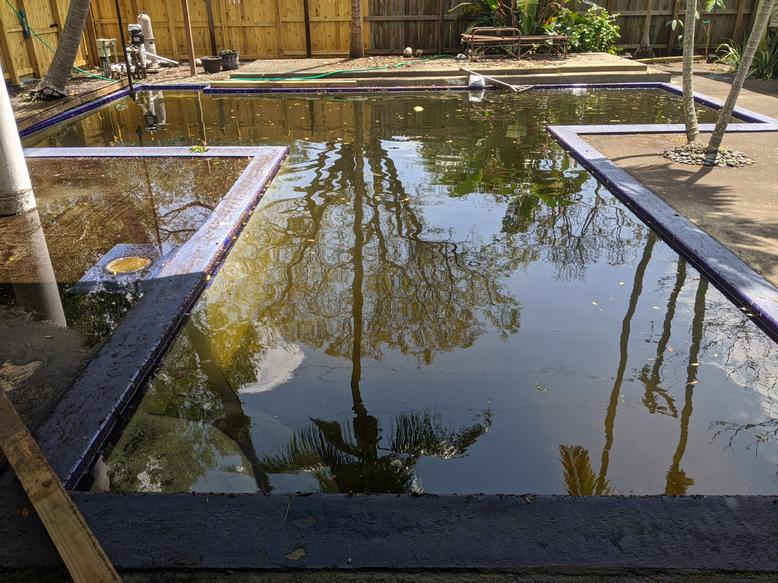Not sure of the best forum for this, a bit of structure a bit of drainage and a bit of soil...
On 4/12/2023, a historic flash flood happened in south Florida, where I live, 26 inches of rain within 12 hours, and most of it within 6 hours. Water so deep cars floated away, I live next to a river and the river water surface rose up to join the rain in the streets and became one. I had 22" of water inside my garage, and on the outside, the fresh rain water mixed with the brackish water in the river, debris everywhere. My pool was flooded over, became a swamp, and there is an inch of black silt at the bottom.


My questions are related to the cleanup process, which involves scooping up all the debris, applying chemical treatment etc...
However, because of the extent of the contamination, I would like to do as extensive a water change as possible. I know this pose a risk since now the soil is saturated with water, and the pool shell is concrete, so draining it fully may result in the pool cracking or popping out due to the hydrostatic pressure acting on the shell.
So the question is, how much water can I drain out of the pool before I need to worry about possible damages? Can I drain it down to zero? I assume not. Can I drain say 75%? 50%?
Some parameters for the pool, total volume ~18000 gallons, depth varies from 43" to 75".
We have a very high water table, even without this rainfall, when I dig around for holes to set fence posts, after 28" below grade I start to see water. I know the water table is not supposed to be this high, but we are next to a river. With the rain I suspect the soil is much more saturated than usual.
On 4/12/2023, a historic flash flood happened in south Florida, where I live, 26 inches of rain within 12 hours, and most of it within 6 hours. Water so deep cars floated away, I live next to a river and the river water surface rose up to join the rain in the streets and became one. I had 22" of water inside my garage, and on the outside, the fresh rain water mixed with the brackish water in the river, debris everywhere. My pool was flooded over, became a swamp, and there is an inch of black silt at the bottom.


My questions are related to the cleanup process, which involves scooping up all the debris, applying chemical treatment etc...
However, because of the extent of the contamination, I would like to do as extensive a water change as possible. I know this pose a risk since now the soil is saturated with water, and the pool shell is concrete, so draining it fully may result in the pool cracking or popping out due to the hydrostatic pressure acting on the shell.
So the question is, how much water can I drain out of the pool before I need to worry about possible damages? Can I drain it down to zero? I assume not. Can I drain say 75%? 50%?
Some parameters for the pool, total volume ~18000 gallons, depth varies from 43" to 75".
We have a very high water table, even without this rainfall, when I dig around for holes to set fence posts, after 28" below grade I start to see water. I know the water table is not supposed to be this high, but we are next to a river. With the rain I suspect the soil is much more saturated than usual.
